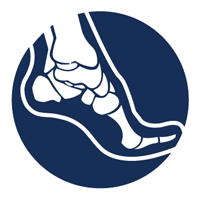What are Bunions and how can they be treated?
A bunion is a painful or sore bump that occurs on the inside of the big toe. This abnormality of the foot is often called Hallux Valgus meaning big toe turning outwards in Latin and occurs slowly as pressure is placed on the big toe turning it outwards and eventually pressing against or overlapping the second toe.
Due to continual pressing of the big toe outwards, the shape of the bones in the foot changes and the resulting deformities are responsible for the pain experienced while walking or running.
Bunions occurs at the largest joint of the big toe where the first long bone of the foot meet the first long bone of the toe. This joint is also called the metatarsophalangeal joint (MTP joint) and is responsible for the bump appearance of a bunion affected toe as the misalignment of the connecting bones cause the joint to become inflamed and swollen.
While bunions more commonly affect women, they can occur in any person and develop in one or both feet.
What are the causes of bunions?
There may be no specific cause to developing a bunion. Tight shoes and high heels shoes may increase risks of developing bunions as the tight, squeezing fit of these types of footwear may pressure the shape of the foot.
Other causes may include having family history of someone with bunions or foot deformities and inflammatory conditions such as osteoarthritis or rheumatoid arthritis.
What are some symptoms of bunions?
Pain, inflammation, tenderness, and swelling on the big toe are the most common symptoms of bunions. Pain is usually worse when walking and running and may occur when wearing shoes.
Thickening of the skin of the big toe together with redness and pain is also a common symptom.
Cosmetically, the big toe will progressively turn outwards towards the little toe. As the condition slowly advances, the big toe may push under the second or third toe causing them to bend upwards.
Do bunions get worse?
Bunions develop slowly over time and you may not feel significant discomforts until the condition advances considerably. Unfortunately, this means that many people do not seek medical help with bunions until there is significant pain or cosmetic issues with the foot.
It is better to seek medical advice on bunions early as there will be more treatment options available and less chances of complications such as big toe arthritis.
X-ray image of foot in different shoes. Notice the area of pressure exerted from the tight fitting shoes. Footwear as such may contribute to the development of bunions.
How are bunions diagnosed?
A medical examination of the foot together with weight-bearing X-ray imaging is the most common way to diagnose bunions.
An orthopaedic specialist surgeon will be able to perform an examination of the foot including thorough inspection and palpation of the joints. The orthopaedic specialist surgeon may also ask you to perform specific movements such standing-up to assess your posture or asking you to walk a short distance to assess your gait.
Discussing your symptoms such is an important part of the examination and it will allow the orthopaedic specialist surgeon to determine which treatments may be suitable.
X-RAY imaging of the foot will allow the orthopaedic specialist surgeon to determine the bone structure of your foot and assess for any signs of complications such as arthritis.
This patient had severe pain caused by the overlapping and rubbing of the big toe against the second toe. It is especially prominent on the right foot.
Bunion surgery is a highly effective treatment. This patient had bilateral bunions and underwent surgery on the right foot. Comparison to the left foot shows a straightened big toe.
What are surgical treatment options for Bunions?
Bunions can be treated with surgical and non-surgical interventions depending on the progress of the condition.
Non-surgical interventions may include toe-spacers, re-alignment splits, proper footwear together with anti-inflammatory medication or painkillers to manage discomforts. Surgery may be needed if these interventions fail to relieve pain or if the condition is severe.
Bunion surgery is a treatment option that physically realign the toes and changes the shape of the foot. Depending on the methods used, the bones of the big toe may be shortened or re-aligned then held together in a new position with pins and screws.
The recovery process may be lengthy and keep you off your feet for a few weeks. Therefore, it is recommended that bunion surgery is done one foot at a time, so you keep some mobility while recovering.
Read our article on bunion surgery.
Here’s what to do next…
Research your condition and treatment options
We provide extensive information about Bunion Surgery on our procedures page.
Do further research and contact us with any questions you may have.
Book a consultation with Associate Professor Roderick Kuo
Prior to your appointment, please obtain a referral from your General Practitioner. This will allow you to claim a Medicare rebate on the consultation fees.
Call or email our team at Specialty Orthopaedics to book your consultation.
Important: Information is provided for guidance only. Individual circumstances may differ and the best way to approach a condition is by individual medical consultation where a specialist can tailor a treatment plan to suit your needs.
Edited by Dr Roderick Kuo
Last updated: 5/5/24





